This Guideline lets you know what is meant by the term ‘rigger’ under the various disciplines that use the term, what services they can supply and, most importantly, what competency standards their governing body or association set for its’ members, if any. The intention of the Guideline therefore is to help you select competent riggers, or rigging companies, appropriate for the rigging job you require.
The term ‘rigger’ originated from those who set sails on tall ships, and the ability to lift or support loads (be they people, light / sound equipment, sets, stage props, etc.) and to work at height safely remain key skills for those who use it today. It is also a term used by those who rig cables (power and telecoms) and ropes for adventure sports, so they are considered here too.
The Guideline ends with how to go about engaging your chosen rigger or rigging company, although further details on how to manage them safely are covered in our other Safety Guidelines including: Studio/Event Rigging, Contractors: Working with, Risk Assessment and others (see Related Topics).
What Can Go Wrong?
The hazards are many and varied, dependent on the rigging activities involved, but typically include:
- Falls from height – many rigging activities are performed at height, often on incomplete structures or ones with limited (or work limiting) fall protection options / measures
- Falling equipment – due to lifting or supporting components or accessories failing under load, or being incorrectly connected / dropped
- Collapse or toppling of structures - due to structural failure from poor design, incorrect use, structural member weakness, overloading, collapse of supporting surfaces, etc.
- Acceleration / impact forces – mainly associated with stunt rigging and flying ballet where performers are lifted / thrown to simulate action sequences
- Suspension syncope / trauma – where rescue arrangements fail to attend quickly enough to persons left motionless when in suspension in a harness
- Electrocution - due to contact with exposed or accidentally damaged electrical conductors.
Legal/���˿��� Requirements
- Rigger company responsibilities – employers need ensure that the demands of the job do not exceed their employees’ ability to carry out the work safely. Competence is the ability to do the work required to the necessary standard. The degree of competence required depends on the risks involved.
- Client responsibilities – if you engage riggers or rigging companies, you have a responsibility to make sure they are suitably competent to do the job required safely, so you need to know how to judge this.
Control Measures
Selecting an appropriate Rigger
Different rigging jobs require differing rigging skills and equipment. Taken together, the ‘Find a Rigger chart’ (See Useful Documents) and the competence criteria by rigger discipline (see below), should help you select the appropriate rigger for a given job; but please note that there can be a great deal of cross-over in skills between different disciplines and between individual riggers. Simply decide which column best describes the rigging job you need doing, and then look up to see which type of rigger discipline would be best suited.
Once you know the type of rigger you need, use the competence criteria below to help you engage one who has the appropriate level of skills, qualifications and/or governing body membership. It is likely that you will be engaging a rigging company to provide a complete rigging service including competent riggers, design plan, rigging equipment, risk assessment / method statement and their own public liability insurance; but for the smaller jobs, and/or ones where we need engage only one or two riggers, perhaps to complement an existing rigging team (e.g. at a venue or studio), it may be appropriate to engage freelance riggers directly to work under a Chargehand, Supervising or other similarly competent rigger. In either case, the skills, qualifications and experience required for a given rigging role should not differ markedly from the criteria described below.
Competence Criteria
- TV / Film Rigger - Rigger carrying out scaffolding and associated work on film or TV sets and locations. Would have in depth knowledge of what is required by the programme making industry. Is sometimes employed to work on behalf of departments such as design, lighting or sfx or stunts. The type and scale of work varies widely, from a simple lighting bar to a suspended scaffold across a whole stage or music venue.
Existing training is likely to consist of a SITAC grade – either trainee rigger, basic or advanced rigger; these have now been superseded by the (with planned alignment to CISRS qualifications). With specialism’s such as wire work, diving and sfx plus training for other skills regarding plant operation FLT’s and MEWP’s and looks after issues such as steel decks; scaffold construction; winches, pulleys, platforms, water tanks (scaffold); rope work.
- Entertainment / Event Rigger - Event riggers are probably much more used to working with proprietary truss systems and related suspension systems; wire ropes, chain hoists, slings and their control systems. Mainly working on behalf of lighting and sound. Quite likely to have MEWP, telehandler or FLT competencies. Roles can also be divided into top rigger (working at height) and ground rigger (not working at height).
The Production Lighting and Sound Association (PLASA) define rigging as the installation, removal or other activity using lifting or suspension equipment or accessories used in tension for lifting or supporting display, production, performance or event technical requirements. PLASA introduced a scheme.
Level 1 Trainee Rigger
Level 2 Rigger
Level 3 Supervising Rigger
The certification scheme includes the assessment of an individuals experience via a log book/sheet system. Riggers are issued with an ID skills card on completion and are placed on an online register of qualified riggers. - Wirework / Flying Ballet Rigger - Specialist task using specialist equipment to suspend and manoeuvre artists from above normally from thin steel wire ropes and pulley systems; these can be operated manually or electronically. Part of the skill is determining the stresses to which the equipment will be subject to during the action and the working load safety margins required.
The term wireman is more often used in the film business with flying ballet being a theatre term.
Equipment can be often designed or made specifically for a specific task and the work often demands that wire ropes are cut and terminated ‘on the day’ using proprietary crimps, fittings and crimping tools. The competency requirements for theatre flying are covered by the with a (priced) Code of Practice on the subject.
- Outside Broadcast Rigger - Carrying out varied tasks on location or at venues regarding the rigging of cables, cameras, transmitters, microphones etc from the OB scanner to the camera/sound positions (typically on a sport or other public event). This role is often combined as a rigger/driver and therefore involves OB vehicle driving and can also involve assisting the crew during camera operations – back watching, cable bashing, driving etc. Work can vary from simple running out of camera cables to roof work and confined spaces. May be more used to working in public areas than other rigging roles.
Currently there are no competency or qualifications schemes for this role but have some good information on the role and some OB riggers may have qualifications or experience from other rigging sectors.
- Access Scaffolder - Various scaffolding tasks ranging from rigging scaffold camera towers to more specialised scaffold structures such as suspended scaffolds or water tanks. Similar to TV Film rigger but more used to working on standardised rigs to a drawing and probably as part of a team rather than working alone and reacting to the location situations at short notice. Skills and qualifications would typically follow those of the CISRS.
Where riggers are required to work at height, this should be planned through risk assessment which includes the means by which anyone stuck at height will be rescued - this may require the appointment of one or more trained Rescue Rigger (Rope Rigger Level 2).
Engaging your Rigger
���˿��� Procurement maintain lists of approved ‘scaffolders’, ‘flying ballet’ and ‘entertainment rigging’ contractors (see Recommended Links (Gateway), so if the rigging discipline you want is one of these, then it is mandatory that you choose one from these lists (contact details are provided). For more information on how to engage and safely manage these riggers, please refer to our Scaffolding and our Studio and Event Rigging Safety guidelines (see Related Topics).
For other rigging disciplines (ropes, stunt rigging), we do not maintain vetted contractor lists for these so you'll need to vet them for yourselves - for guidance on how to do this and how to manage them safely, please refer to our respective guidelines on Stunts and on Rope Access Techniques (see Related Topics).
Division Specific Issues
- No division specific issues.
Useful documents
Recommended links
Working with Third Parties topics
-
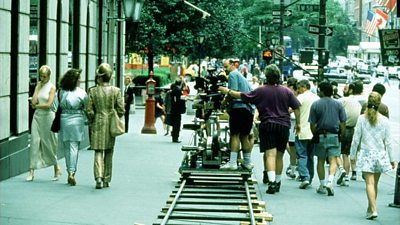
Contractors: Working with
This Guideline sets out our approach to working safely with contractors and includes access to our vetted contractor lists. -
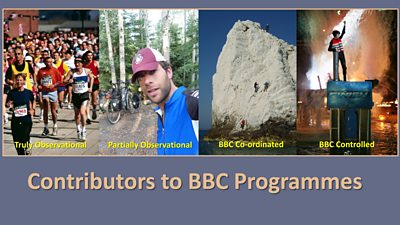
Contributors: Working with
This Safety Guideline provides guidance to those who work with contributors in the generation of content for our programmes or webpages, be it us filming / recording them or them providing us with their user generated content (UGC). -

Freelancers: Working with
A Safety Guideline to the engagement and management of ‘freelancers’ working at the ���˿���. -

Independent Production Companies: Working with
The ���˿��� needs to ensure that any Independent Production Company it commissions is able and competent to make the programme with due consideration for health and safety. -
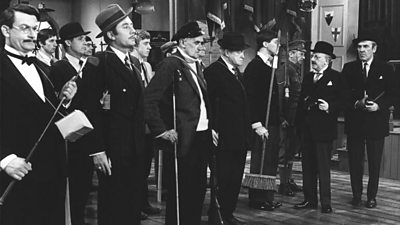
Monitoring and Review
Monitoring and review are the ‘check’ part of the Plan–Do–Check–Act of our H&S management system. -
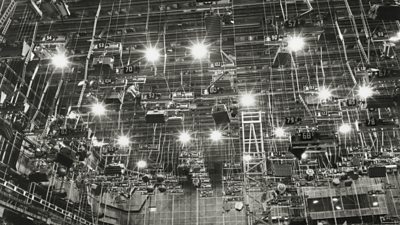
Riggers: Selection of
This Safety Guideline provides guidance to those who wish to engage riggers / rigging supervisors on productions. -
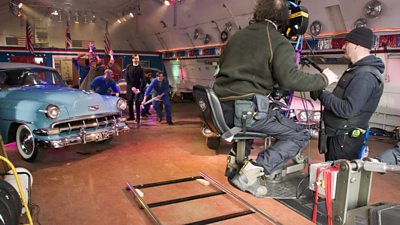
Working with Third Parties
This section lists the safety guidelines we have for when we work with third parties i.e. those who are not employed directly by the ���˿���.
More from SSR
-
Your platform to record accidents, risk assessments, assurance monitoring and inspections
-
Safety Equipment Stores
Just one number to call: 020 3614 5155 -
���˿��� Safety Guidelines
An A-Z of ���˿���'s Health and Safety Guidelines -
Safety Advice Line: 0370 411 0464 Email: safety@bbc.co.uk
- A-Z of ���˿��� Safety Guidelines
- Accident Reporting and Investigation
- ���˿��� Health & Safety Policy
- Contractors (incl. vetted lists)
- Contributors
- Fire Safety
- Freelancers
- Independent Production Companies
- Risk Assessment
- Safety Alerts
- Safety Responsibilities
- Safety Training
- Sets & Premises Safety Guide
Events guidance - key links:
- Exhibitions
- General Guidance
- Indoor Location Recce Checklist
- Outdoor Location Recce Checklist
- Major Incidents & Emergency Planning
- Marketing and Promotional
- Noise Exposure
- Planning and Management
- Responsibilities
- Responsibilities Form
- Laser Lighting Effects
- Strobe Lighting
- Temporary Stages and Rostra
Health topics - key links:
- (���˿��� network only)
- Contributors Fitness to Participate
- Display Screen Equipment (DSE)
- (���˿��� network only)
- First Aid and Welfare on Location
- International Travel - Risks & Health
- Manual Handling
- Mental Health: ���˿���page
- (���˿��� network only)
- Personal Health and Wellbeing
- Pregnancy
- Psychological Trauma Support & Trauma Risk Management (TRiM)
- Tiredness and Fatigue
- Travel Health Contacts
���˿��� High Risk - key links:
- CBRN and Industrial Spills
- Covert Filming
- Crisis Management and Security Support
- Demonstrations, Protests and Crowds
- Disaster Coverage
- Door Stepping
- (���˿��� network only)
- (���˿��� network only)
- Public Order
- Safety Equipment Stores
���˿��� Journalism - key links:
���˿��� Productions - key links:
- Aerial Filming and Airfields
- Animals: Displaying and handling for performance
- Boats: Working on
- Children and Young People
- Driving
- Electrical Equipment and Systems
- First Aid and Welfare on Location
- Food Safety (Cooking and Catering)
- Remote Location Working
- Roads and Streets: Working by
- Security of Productions on Location
- Stunts
- Tiredness and Fatigue
- Unmanned Aerial Systems (UAS aka Drones)
- Vehicles: Recording in, from and around
- Working at Height: Mobile Elevating Work Platforms
- Working at Height: Tower Scaffolds
���˿��� Radio - key links:
- (���˿��� Network only)
���˿��� Security - key links:
���˿��� Sport - key links:
About this site
This site describes what the ���˿��� does in relation to managing its health, safety and security risks and is intended for those who work directly for the ���˿���.
It is not intended to provide instruction or guidance on how third parties should manage their risks. The ���˿��� cannot be held liable for how this information is interpreted or used by third parties, nor provide any assurance that adopting it would provide any measure of legal compliance. More information
Some links on this site are only accessible when connected to the ���˿��� network
